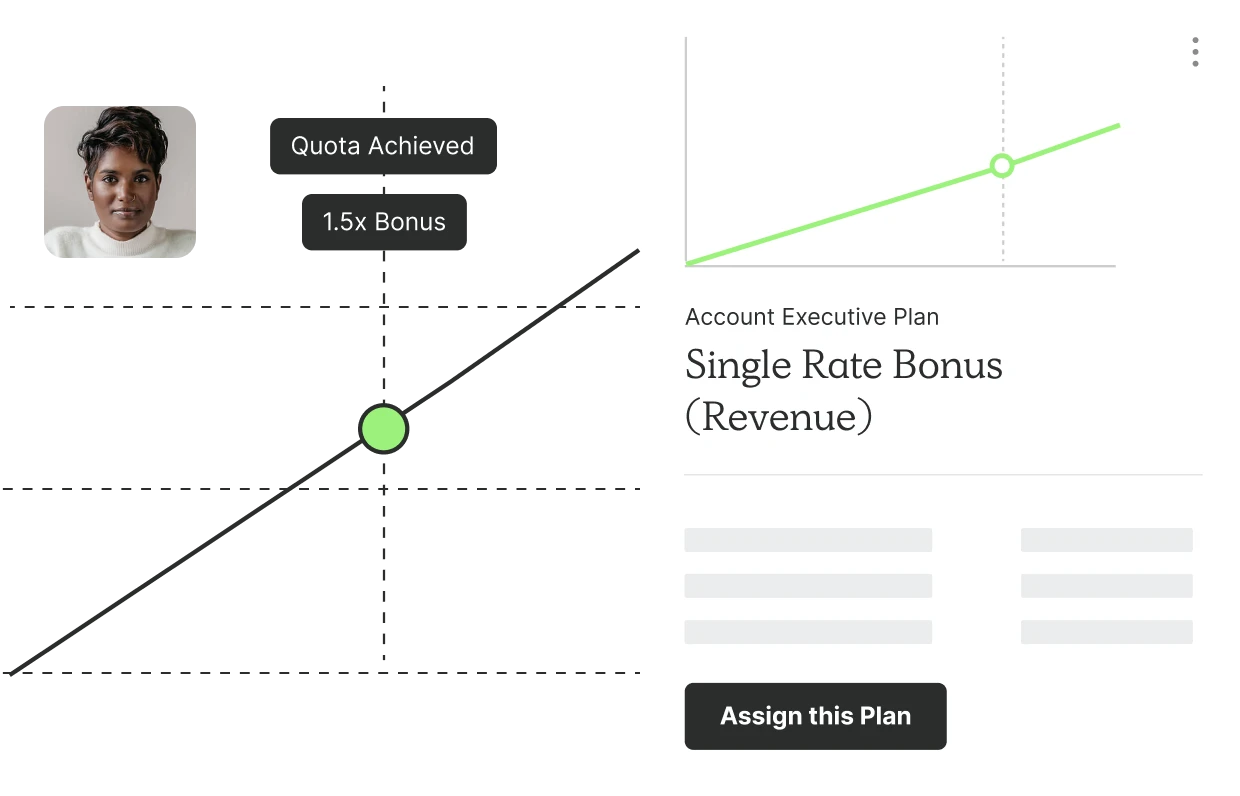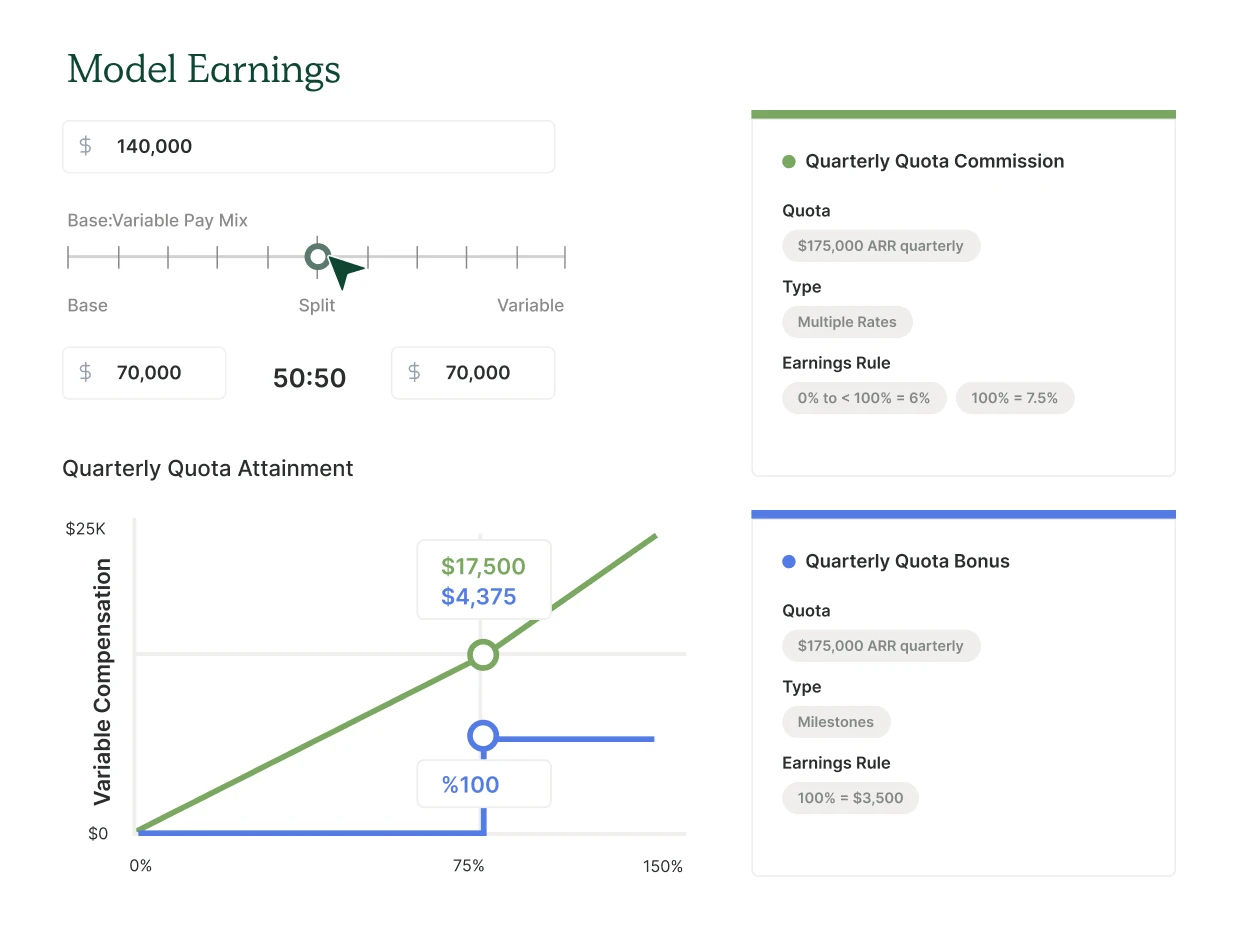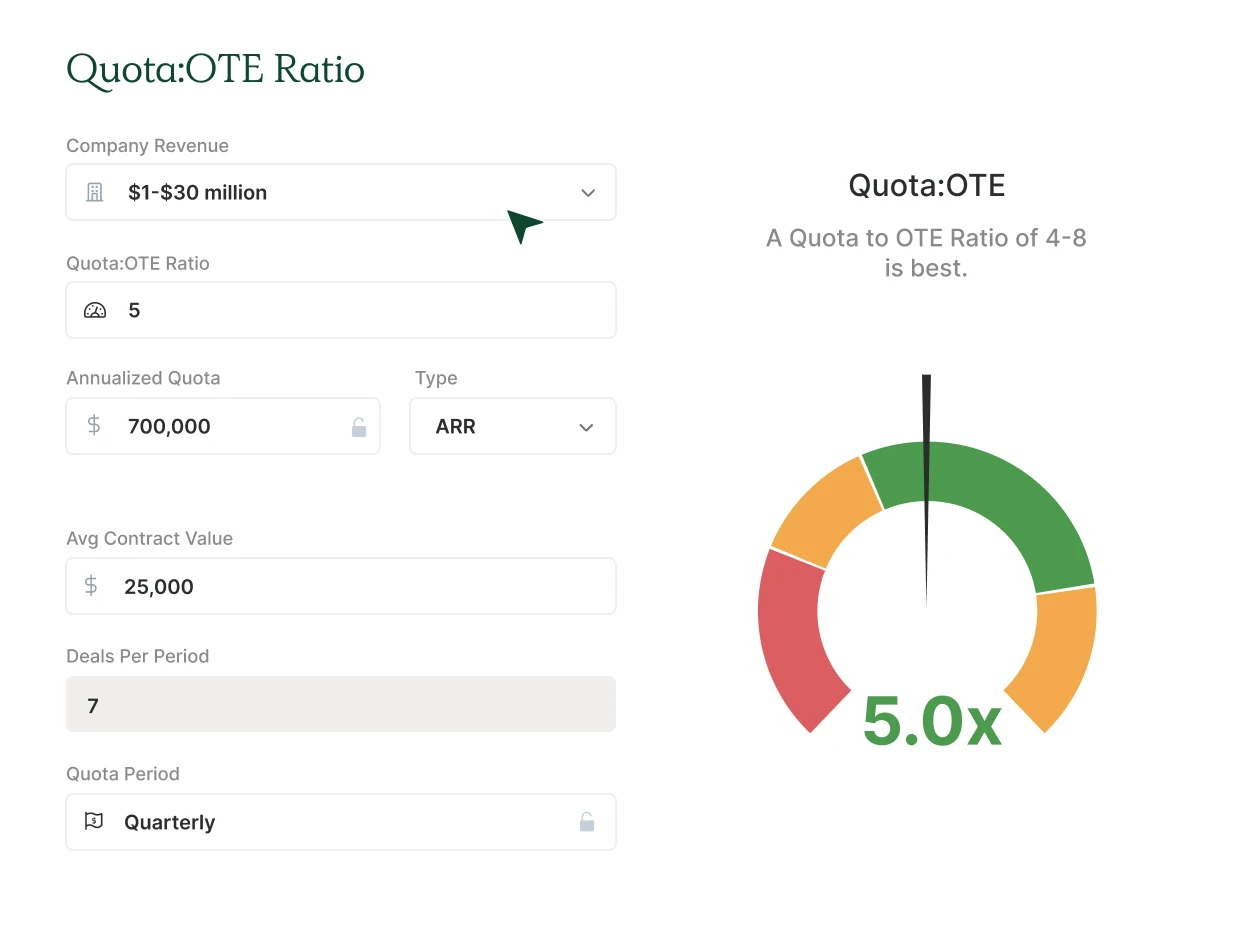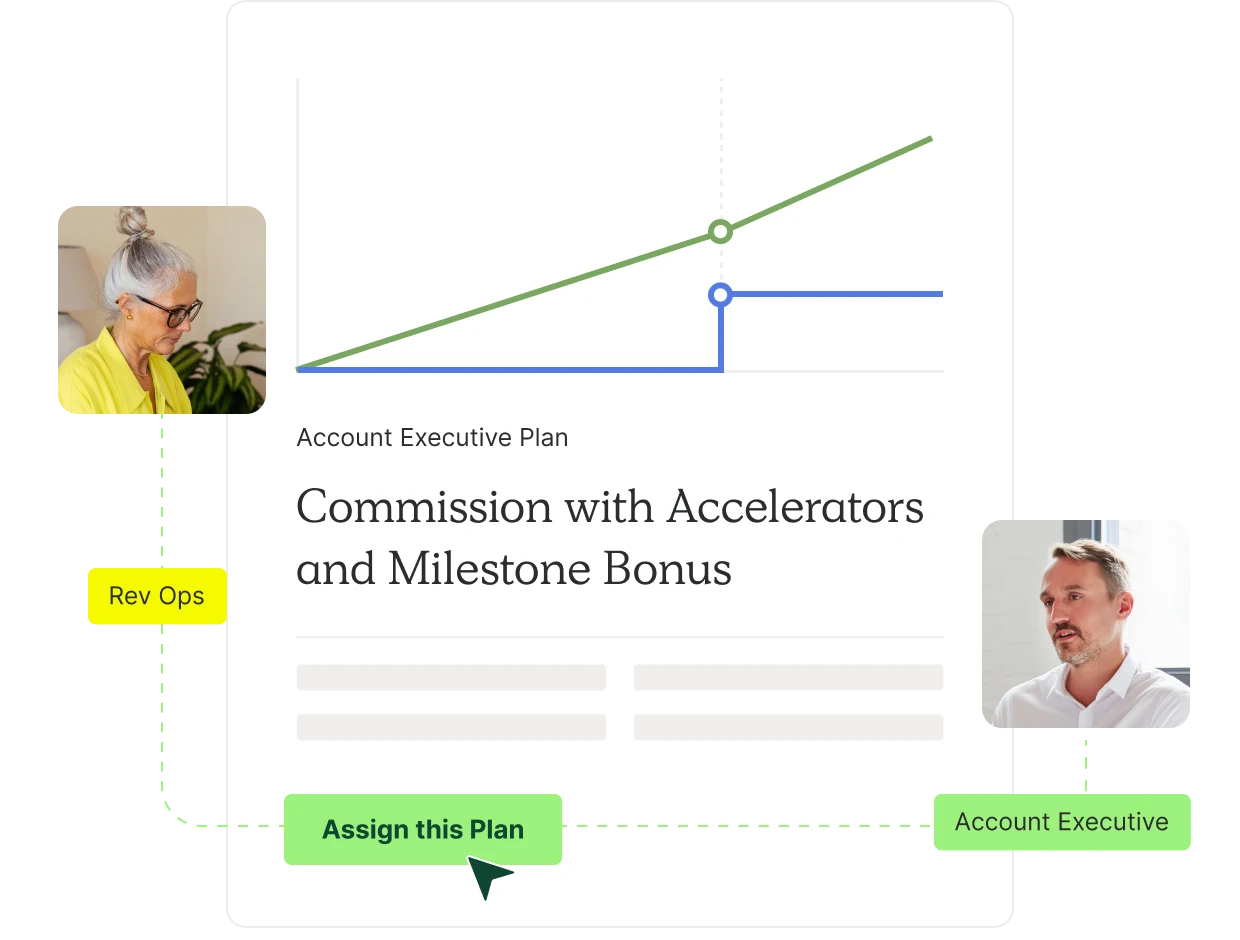Use when quota changes throughout the year but variable stays the same
Single Rate Bonus (Revenue)
This bonus structure resembles the Single Rate Commission Plan but instead of a commission rate it pays a flat bonus. If you’re selling into education, this is a great plan.

When to use this plan?
Why use a Single Rate Bonus plan?
This plan is easily understood and can be adjusted quickly
Customize the Commission with Single Rate Bonus Plan Template
Like this plan? Sign up for QuotaPath for free to add your business inputs and adjust the variables.
Forecast earnings & plan performance
See potential earnings based on your inputs and goal attainment progress.

Check the health of your Quota:OTE ratio
Use the calculator to quickly measure how realistic, attainable, and healthy your OTE to quota ratio is.

Streamline plan management
Assign the plan to your team and automate sales commission calculations. Be confident your team is being paid fairly and accurately.

How to adjust this compensation plan template
To customize this plan, you will input these 7 variables.
On-Target Earnings (OTE)
OTE combines base salary with variable pay and represents the total amount of money your reps can expect to earn if they hit 100% of quota.
Pay Mix
Refers to the percentage of a salesperson’s total compensation, made up of base salary, commission, and other incentives. The most common pay mix in SaaS is 50/50.
Company Revenue
Revenue is the total amount of income that a company generates from its primary operations. In SaaS, annual recurring revenue is one of the most important metrics.
Quota:OTE Ratio
This ratio quantifies how much larger a quota is to a sales rep’s OTE. The most common multiplier in SaaS is a quota 5x that of the OTE, but this will vary based on size and stage of the company.
Annualized Quota
An annualized quota is a sales goal that is set for a year.
Average Contract Value
Often abbreviated to ACV, this number represents the average deal size that your company sells.
Quota Period
Your quota period sets the frequency at which your team’s quota resets. In SaaS, the most common quota period is quarterly. However, this number will vary based on your sales cycle.
Frequently asked questions
What is a single rate, revenue-based bonus plan?
This plan has a set bonus amount per attainment point of quota the rep achieves. For example, a rep might have a $100k quarterly quota and is paid $100 per quota attainment point. That means that if they end at 100% quota, they get $100 x 100 points, or $10k. If they end at 80%, they get $100 x 80 points, or $8k bonus.
How do you set bonus rates?
Setting a bonus rate is fairly straightforward. First, you would take the total variable portion of the rep’s on-target earnings and divide that by the number of quota periods the rep has per year. So for example, if your rep has a $60k annual variable and a monthly quota, you would divide $60k by 12 (12 months in a year) and get $5k. Then you divide that $5k by 100 and get $50 per attainment point.
What’s the difference between this plan and a single rate bonus plan that’s based on quantity of deals?
A plan that focuses on the quantity of deals pays the same rate regardless of the size of the deals. This plan allows you to compensate the rep based on their quota attainment.
How does this differ from a milestone bonus?
A milestone bonus is earned when the rep meets designated stipulations and is paid a set amount, as a result. These bonuses do not vary if the rep is below or above these requirements. Meaning, anything less than the quota, and the rep earns nothing. Whereas with a single rate bonus (revenue) plan, the rep receives the same per-attainment point bonus regardless of quota attainment.
What’s the difference between sales commissions and bonuses?
Sales bonuses differ from commissions in that bonuses are based on a set amount of money for completing a task. Meanwhile, commissions consist of a percentage of the total revenue from a deal. For example, If a rep gets 10% of every deal closed, that’s commission. If a rep earns $300 for every deal they close, that’s a bonus.
What are some common sales compensation best practices?
When it comes to sales compensation and commissions calculations best practices, the best thing you can do as a leader is clearly communicate the methodology behind your sales compensation model to your team. A close second would be to provide every stakeholder tied to commissions with a single source of truth that democratizes the often siloed commission process.
Explore similar compensation plans

Single Rate Commission
This industry agnostic commission plan is simple, straightforward, and great for your first plan.

Multiple Rate Bonus (Revenue)
Good for high seasonality businesses.

Single Rate Bonus (Quantity)
The perfect compensation structure when you have consistent deal values, like in solar or telecom.
What industry leaders say
Manage compensation & track commissions with QuotaPath
Deliver visibility, automation, and seamlessness across the entire compensation process.